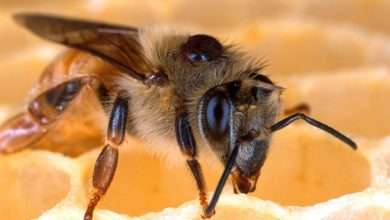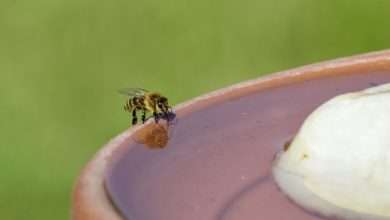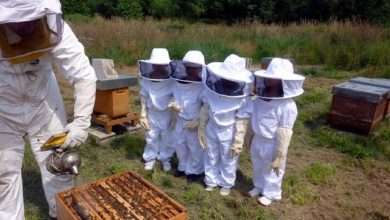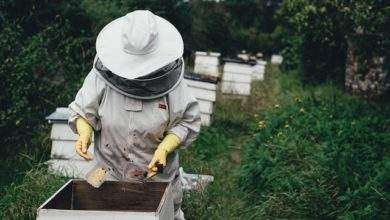Supplemental Feeding for Beekeepers: Maximizing Hive Health in February and March

As a beekeeper, you understand the significance of supplemental feeding, especially as winter turns into early spring. February and March are crucial months for ensuring that your bees have adequate food supplies to support their colony’s growth.
In this article, we will discuss the various types of supplemental feeding, including sugar syrup, pollen substitute, protein patty, and candy board, and provide tips for successful feeding during these critical months.
The Importance of Supplemental Feeding for Beekeepers
Ensuring Colony Survival:
- Bees require a continuous and diverse supply of nectar and pollen to thrive and survive.
- During certain times of the year, such as late winter and early spring, natural food sources may be limited or insufficient.
- Supplemental feeding provides vital sustenance to colonies during these critical periods when their survival is at stake.
Colony Growth and Development:
- Adequate nutrition is fundamental for bees’ overall health and well-being, especially during periods of increased brood rearing.
- Supplemental feeding supplies the necessary nutrients, enabling bees to produce more brood, resulting in stronger and more productive colonies.
Preventing Colony Decline:
- Insufficient food resources can lead to weakened colonies, making them vulnerable to various diseases, pests, and parasites.
- Supplemental feeding helps bolster the immune system of bees, reducing their susceptibility to diseases and enhancing colony resilience.
February and March: Crucial Months for Supplemental Feeding
Supplemental feeding is an indispensable practice for beekeepers who wish to maintain robust and thriving honeybee colonies. By understanding the importance of this feeding strategy, especially during the critical months of February and March, beekeepers can ensure the health and survival of their bees throughout the year.
By providing the necessary nutrients, supplemental feeding aids in colony growth, prevents decline, and prepares colonies for a successful nectar flow. Remember, a well-fed and nourished colony is the key to a prosperous beekeeping venture.
Types of Supplemental Feeding for Honeybees
With a multitude of options available, it is important for beekeepers to understand the different types of feeding techniques and their benefits.
- Sugar Syrup: One of the most widely used methods of supplemental feeding is sugar syrup. This involves creating a solution of sugar and water, in varying ratios depending on the desired concentration. Beekeepers commonly employ sugar syrup when nectar availability is limited, such as during periods of drought or in colder seasons. It serves as a substitute for natural nectar and provides honeybees with a source of carbohydrates to sustain their energy levels.
- Pollen Substitute: Pollen plays a crucial role in honeybee nutrition as it serves as a protein source necessary for brood rearing. However, in times of scarcity or when pollen diversity is limited, beekeepers can provide bees with pollen substitutes. These supplements are typically formulated using a combination of various ingredients, such as soy flour, brewer’s yeast, and other nutrients that mimic the composition of natural pollen. Pollen substitutes help ensure that honeybee colonies have access to an adequate protein supply for their growth and development.
- Protein Patties: Similar to pollen substitutes, protein patties are specifically designed to provide honeybees with the necessary proteins for brood rearing. These convenient patties, made from a mixture of ingredients like soy protein, brewer’s yeast, and essential nutrients, can be easily placed inside the beehive. They serve as a vital food source, especially during times when natural pollen availability is limited, aiding in the healthy development of honeybee larvae.
- Fondant: Fondant is a type of feed commonly used during the winter months or in colder regions where sugar syrup may not be as effective due to lower temperatures. It is a soft, pliable mixture made from granulated sugar, water, and sometimes other additives like vinegar or cream of tartar. Beekeepers often place fondant on top of the hive frames, allowing honeybees to consume it as a supplemental carbohydrate source during periods when foraging is limited.
- Candy Board: In some regions with prolonged cold winters, candy boards are a popular method of supplemental feeding. These boards are typically made from a mixture of granulated sugar, water, and additives like vinegar or cream of tartar, similar to fondant. The candy board is strategically placed above the cluster of honeybees within the hive, ensuring easy access to a concentrated food source during winter months when fresh forage is scarce.
Supplemental feeding plays a vital role in maintaining the health and productivity of honeybee colonies. Beekeepers can choose from a variety of feeding methods, including sugar syrup, pollen substitutes, protein patties, fondant, and candy boards, depending on their specific circumstances and the needs of their honeybee colonies. By providing essential nutrients during times of scarcity, beekeepers can help ensure the survival and success of their precious bees.
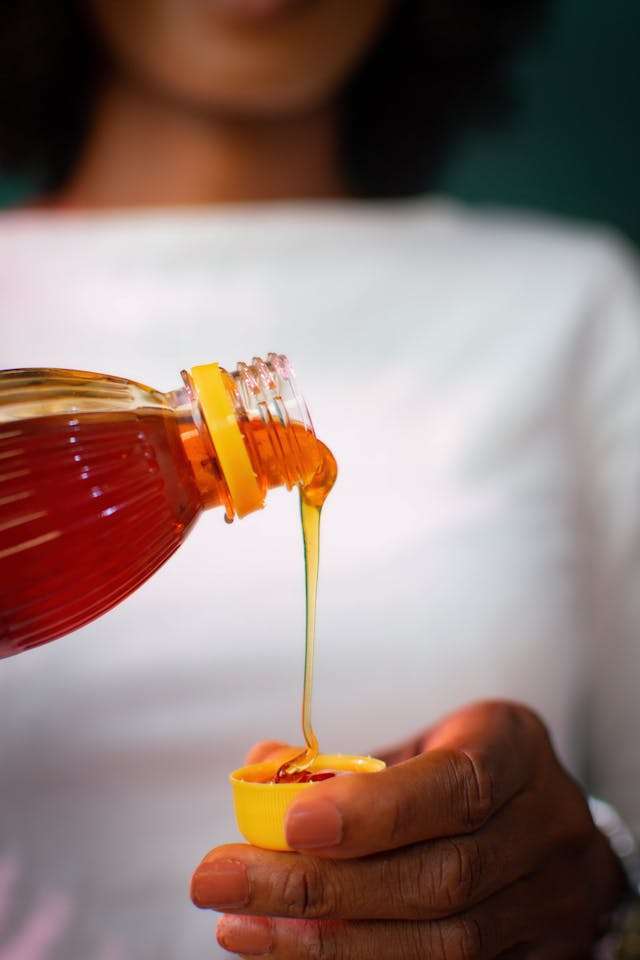
How to Prepare Sugar Syrup for Feeding Bees
Providing the bees with a nourishing sugar syrup can ensure their survival and help maintain their productivity.
- Ratio of Sugar to Water: The optimal sugar to water ratio is a fundamental consideration when preparing sugar syrup for bees. A commonly used ratio is 2:1, that is, two parts sugar to one part water. This ratio closely mimics the sugar concentration found in nectar, making it an ideal choice for feeding bees. However, during periods of heavy feeding or when stimulating colonies, a ratio of 1:1 may be more suitable. It is important to remember that using alternatives to white granulated sugar, such as brown or organic sugars, can result in nutritional imbalances for the bees and should be avoided.
- Boiling vs. Cold Mixing: There are two primary methods of mixing sugar syrup: boiling and cold mixing. Boiling involves dissolving sugar in hot water, which offers the advantage of killing any potential spoilers, such as yeasts or bacteria, present in the sugar or water. This method usually prolongs the shelf life of the syrup. However, cold mixing is a quicker and simpler approach, involving the direct mixing of sugar with cold water. Although this method does not eliminate potential spoilers, it remains a viable option when time is of the essence or for small-scale feedings.
- Feeding Methods: Various feeding methods can be employed to provide bees with sugar syrup. The most common method is to use a feeder placed directly inside or near the hive. This can be in the form of a frame feeder, top feeder, or entrance feeder, each offering different advantages and considerations. Frame feeders are placed within the beehive, allowing easy access for the bees while minimizing exposure to external elements. Top feeders are positioned on top of the hive, requiring less disturbance to the colony during refilling. Entrance feeders, on the other hand, are placed near the hive entrance and are a valuable option during colder seasons when the other feeders may not be suitable. Selecting the appropriate feeding method depends on factors such as hive dynamics, weather conditions, and the total amount of syrup required.
- Storage and Shelf Life: Proper storage of sugar syrup is essential to maintain its freshness and nutritional value. Store your prepared syrup in clean and airtight containers to prevent contamination. Glass jars or food-grade plastic containers are recommended. Ideally, syrup should be stored in a cool and dark location, away from direct sunlight. Well-prepared sugar syrup can have a shelf life of up to two weeks. However, it is important to regularly check for signs of fermentation, such as a sour smell or bubbles, as this indicates spoilage. If fermentation occurs, discard the syrup immediately to prevent harm to the bees.
Tips for Successful Sugar Syrup Feeding:
To enhance your sugar syrup feeding and promote optimal bee health, consider the following tips:
1. Use clean utensils and equipment when preparing the syrup to avoid introducing contaminants.
2. Warm the water before dissolving the sugar to accelerate the mixing process while maintaining the desired ratio.
3. Avoid feeding bees sugar syrup during rainy or cold weather, as it can lead to chilling or excessive moisture within the hive.
4. Monitor the syrup consumption regularly to ensure the bees are receiving an adequate supply and adjust as necessary.
5. Always provide fresh, clean water sources nearby so that bees can hydrate themselves and dilute the syrup if needed.
6. Perform routine inspections of the hives to check for signs of excessive syrup consumption, which may indicate other issues within the colony.
Preparing sugar syrup for feeding bees is an essential task for beekeepers, ensuring the sustenance and well-being of their colonies. By following the appropriate ratio of sugar to water, choosing between boiling and cold mixing, utilizing suitable feeding methods, storing correctly, and employing valuable tips, you can successfully nourish your bees and contribute to their thriving health. Remember, a well-fed colony is a thriving colony, ready to pollinate, produce honey, and play a vital role in our ecosystem.
Making Pollen Substitute
One vital aspect of beekeeping is providing proper nutrition, especially during times when natural pollen sources might be limited. Here, we will explore the process of making pollen substitute for beekeepers.
Ingredients and Nutritional Benefits:
- Soy Flour: Soy flour is a primary ingredient commonly used in pollen substitute recipes. It is rich in protein, vitamins, and essential amino acids necessary for honeybee growth and development.
- Brewer’s Yeast: Brewer’s yeast is a nutritional powerhouse that provides vital nutrients like B vitamins, protein, and minerals. It improves overall colony health and increases brood production.
- Bee Pollen: Adding natural bee pollen to your pollen substitute mixture enhances its nutritional value. Bee pollen is a balanced and complete food source, containing carbohydrates, proteins, fats, vitamins, minerals, and enzymes.
- Wheat Germ: Wheat germ is packed with nutrients such as B vitamins, vitamin E, antioxidants, and essential fatty acids. It boosts honeybee immune systems, aiding in disease resistance.
- Vitamins: Including a vitamin supplement like vitamin C and B vitamins can be beneficial, promoting overall colony health and immunity.
Mixing and Preparing Pollen Substitute:
1. Start by combining the dry ingredients thoroughly in a large mixing bowl or container. The ratio of ingredients may vary depending on the recipe you follow.
2. Gradually add water or a sugar syrup solution to the mixture while stirring continuously until you achieve a dough-like consistency. Make sure the mixture is well-moistened but not excessively wet or dry.
3. Knead and mix the dough thoroughly for a few minutes to ensure even distribution of ingredients.
4. Once the mixture is well-mixed, divide it into smaller portions, making it easier to handle during feeding.
Feeding Methods:
- Patti Method: Prepare small patties from the pollen substitute mixture and place them directly on top of the brood frames, preferably close to the broodnest. This method simulates natural pollen storage for easy consumption.
- Fondant Method: You can shape the pollen substitute mixture into small fondant-like cakes or bars. Place these directly on the top bars of the frames, enabling bees to consume them easily.
- Jar Feeding: Another option is to fill quart-sized jars with the mixture. Use a nail to create small holes in the lid, allowing the bees to access the substitute. Place the jars upside down on the inner cover, ensuring proper ventilation.
Best Practices for Successful Pollen Substitute Feeding:
- Time your feeding strategically, considering periods of pollen dearth or when natural sources are limited.
- Monitor your colonies’ consumption to determine the appropriate amount of pollen substitute required. Adjust the quantity accordingly.
- Always provide a natural water source nearby as honeybees need water to bind the substitute and enhance its digestibility.
- Avoid placing pollen substitute feed directly next to honey stores to prevent contamination and potential honey quality issues.
By mastering the art of making pollen substitute for your honeybees, you can ensure their nutritional needs are met, especially during periods of pollen scarcity.
Preparing Protein Patties
Another way to supplement your bees diet is by preparing protein patties. These patties act as an additional food source during times when natural forage is scarce or insufficient.
Best Ingredients for Protein Patty
Choosing the right ingredients for your protein patty is vital to provide your bees with essential nutrients for their well-being. Some key ingredients to include are:
- Soy Flour: A rich source of protein, soy flour contains amino acids necessary for bee development and brood rearing.
- Brewer’s Yeast: Packed with essential B vitamins, amino acids, and minerals, brewer’s yeast enhances bee nutrition and boosts their immune system.
- Pollen Substitute: Pollen substitutes mimic the nutritional content of natural pollen and provide bees with a wide range of essential vitamins and minerals.
- Sugar Syrup: Sugar syrup acts as a binding agent when mixed, ensuring the protein patty holds its shape and remains intact for easy consumption.
Mixing and Shaping Protein Patty:
1. In a large mixing bowl, combine the soy flour, brewer’s yeast, and pollen substitute in the desired ratios. Follow the recommended proportions specified by the manufacturer for optimal nutrition.
2. Gradually add sugar syrup to the mixture while stirring continuously until the ingredients form a thick, pliable dough-like consistency.
3. Knead the mixture for a few minutes to ensure even distribution of the ingredients and to create a cohesive patty.
4. Divide the mixture into small portions and shape them into patties, approximately 1 inch thick. Ensure the size of the patties matches the number of bees in your hive and the feeding equipment you plan to use.
Feeding Methods:
There are various feeding methods you can employ to offer protein patties to your bees. These methods include:
- Direct Placement: Place the protein patties on top of the frames inside your hive using a specialized feeder or by securing them directly onto the top bars of the frames.
- Patties on Lids: Utilize hive lids designed with slots or grooves to hold protein patties. The bees will access the patties through these openings.
- Division Board Feeder: Install a division board feeder within the hive, ensuring it has an open compartment where you can place the protein patty. This method provides a controlled and easily accessible feeding solution.
Storage and Shelf Life:
Proper storage is essential to maintain the quality and efficacy of your protein patties. Consider the following tips for storage:
- Store protein patties in a cool, dry place away from direct sunlight to prevent mold growth and deterioration.
- Use airtight containers or zip-lock bags to maintain freshness and prevent exposure to humidity.
- Keep a record of the production date on each batch and rotate your stock, using the oldest patties first to avoid long-term storage.
- Check patties regularly for signs of spoilage or degradation and discard any that appear moldy or have an off odor.
Tips for Ensuring Bees Consume Protein Patty
While offering protein patties is crucial, it is equally important to ensure that your bees readily consume this valuable nutritional source. Consider implementing the following tips to maximize consumption:
1. Place the patties close to the brood chamber, as bees instinctively seek out protein-rich food sources near their developing brood.
2. Monitor the intake of protein patties periodically and adjust the quantity provided based on the hive’s requirement and rate of consumption.
3. Evaluate the protein patty mixture regularly to ensure its texture, aroma, and taste are appealing to the bees. Adjust the recipe if necessary.
4. Consider factors such as weather conditions and the availability of alternative food sources, as these may influence your bees’ preference for protein patties.
Preparing protein patties for your bees is a valuable practice to enhance their nutrition and overall hive health. By using the best ingredients, mastering the mixing and shaping process, employing suitable feeding methods, ensuring proper storage, and implementing effective consumption strategies, you can provide your bees with the essential nutrients they need to thrive. Remember, a well-nourished hive is a healthy and productive hive.
Using Candy Boards
We will explore the use of candy boards as a practical feeding method for beekeepers. We will discuss the ingredients needed for making a candy board, the steps for assembling and installing it, different feeding methods, and the pros and cons of employing this technique. Additionally, we will provide some best practices to ensure successful candy board feeding for the well-being of your bee colonies.
Ingredients for Making Candy Boards
To create a candy board, you will need the following ingredients:Sugar:
- Granulated white sugar is the primary ingredient for making candy boards, providing a source of energy for the bees during times of scarcity.
- Water: Water is required to dissolve the sugar and create the candy mixture.
- Additives (optional): Some beekeepers may choose to add additives like essential oils or pollen substitutes to enhance the nutritional value of their candy boards.
Assembling and Installing Candy Boards:
Here is a step-by-step guide to assembling and installing a candy board for your beehive:
1. Measure and cut a piece of wood or use a pre-made candy board that correctly fits the dimensions of your hive.
2. Create ventilation holes on the board to allow air circulation within the hive.
3. Prepare the candy mixture by dissolving sugar in warm water. Stir until the sugar is fully dissolved.
4. Pour the candy mixture into the prepared candy board, filling it almost to the top.
5. Optional: Add any desired additives to the candy mixture, ensuring they are well mixed.
6. Allow the candy board to cool and solidify.
7. Install the candy board on top of the uppermost brood chamber, ensuring there is direct contact with the cluster of bees.
Feeding Methods:
There are a few different methods you can employ to feed your bees using a candy board:
- Top Feeding: This involves placing the candy board directly on top of the brood chamber, allowing the bees to access the candy mixture from above.
- Rim Feeding: By creating an additional rim or box that fits snugly on top of the brood chamber, you can place the candy board inside it. This method provides extra protection against moisture and cold temperatures while allowing bees to access the food from below.
- Division Board Feeding: If you wish to feed specific colonies or conduct targeted feeding, you can place candy boards on a division board, separating sections of the hive.
Best Practices for Successful Candy Board Feeding:
To optimize the effectiveness of candy boards, consider following these best practices:
- Regularly monitor food levels, particularly during colder months, and replenish if necessary.
- Protect the candy board from moisture and pests by providing adequate insulation and using entrance reducers.
- Position the candy board close to the cluster of bees in the upper brood chamber for easy access.
- Supplement candy board feeding with other food sources such as fondant or syrup when needed.
By carefully following the steps for assembling, installing, and utilizing candy boards, and by considering their pros and cons, beekeepers can help ensure the well-being and survival of their honey bee colonies throughout the year.
Conclusion
Supplemental feeding is crucial for beekeepers, especially during February and March. By understanding the various types of supplemental feeding and following best practices for each, you can ensure that your bees have an adequate food supply to support their colony’s growth. Be sure to monitor and assess the effectiveness of your supplemental feeding methods and seek out additional resources for more information on beekeeping and supplemental feeding.
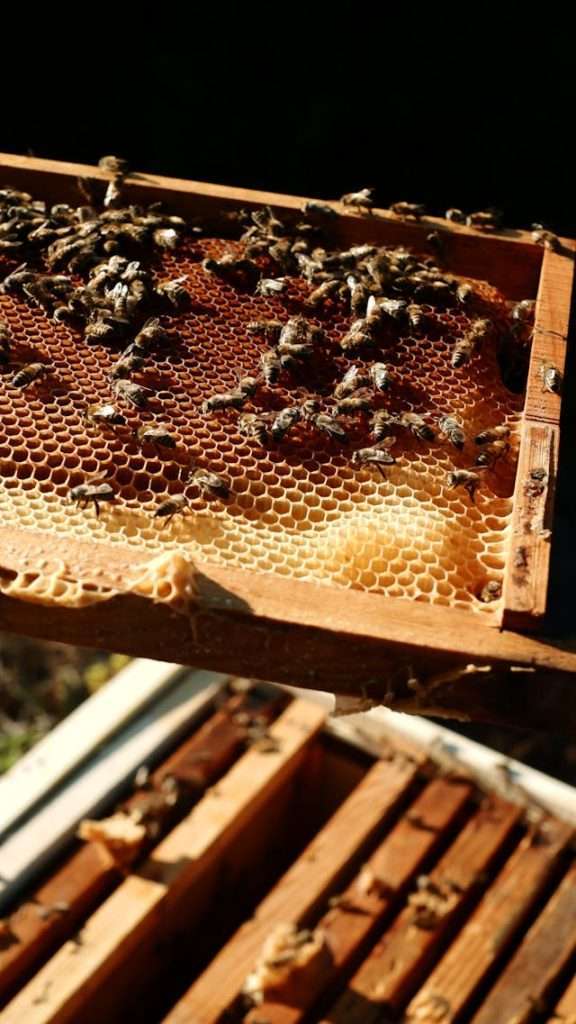
FAQ
Why is supplemental feeding important for beekeepers during February and March?
- Supplemental feeding is crucial during these months because it helps ensure the survival and well-being of bee colonies. In late winter and early spring, natural forage may be scarce, posing a risk of starvation for the bees. By providing supplemental food, beekeepers can support their hives and help them thrive until sufficient natural food sources become available.
What is the best type of supplemental feeding for bees during February and March?
- There are several types of supplemental feeding that can benefit bees during these months, including sugar syrup, pollen substitute, protein patty, and candy boards. Each type has its advantages and can be useful in different circumstances, so it’s essential to consider the specific needs of your colony when choosing the best option.
Can I feed honey to my bees as a supplement?
- No, it is not recommended to feed honey to your own bees as a supplement. Honey from sources outside your apiary might introduce diseases and pathogens, posing a risk to your colony’s health. Additionally, feeding honey can encourage robbing behavior and result in fights between bee colonies. It is best to stick to sugar syrup or pollen substitutes specifically designed for beekeeping.
How often should I provide supplemental feeding to my bees during February and March?
- The frequency of supplemental feeding depends on the resources available to your bees and the condition of the colony. It is recommended to monitor the feed levels regularly and refill as needed. In these months, beekeepers often check the feeders every 1-2 weeks. Ensure the feeders are adequately stocked to prevent starvation or depletion of resources.
Are there any signs that indicate my bees need supplemental feeding?
- Observing the bees’ behavior and colony conditions can give you an indication of their need for supplemental feeding. Signs of starvation include bees frantically searching for food or weakening bees unable to fly. Additionally, an overall decrease in brood production or the number of bees may indicate a lack of resources. Regular hive inspections can help identify these situations promptly.
Can I use natural forage alone without supplemental feeding during this time?
- While natural forage is generally preferred, relying solely on natural sources during late winter and early spring might not provide sufficient sustenance for the colony. Weather conditions and environmental factors can limit forage availability, making supplemental feeding necessary to avoid starvation and maintain hive vitality. It is best to provide a combination of natural forage and supplemental feeding during this critical period.
Is there a risk of overfeeding my bees with supplemental feed?
- Yes, overfeeding bees with supplemental feed can have adverse effects on the hive. It may lead to excessive honey stores, which can encourage swarming or increase the chances of disease and pest infestations. It is essential to monitor the amount of feed consumed by the colony and adjust accordingly to prevent overfeeding. Remember, moderation is crucial in supplemental feeding.
Can I mix pollen substitute with sugar syrup for feeding my bees?
- Yes, you can mix pollen substitute with sugar syrup to provide a more comprehensive nutritional supplement for your bees. Mixing pollen substitute with sugar syrup allows the bees to obtain both carbohydrates and essential proteins simultaneously. This combination can enhance brood development and overall hive health. Ensure you correctly follow the instructions provided by the manufacturer of the pollen substitute.
Are there any beekeeping practices to follow alongside supplemental feeding in February and March?
- Alongside supplemental feeding, other essential beekeeping practices should be followed during this period. Regular hive inspections, checking for signs of diseases or pests, and maintaining proper ventilation are crucial. Additionally, monitoring for varroa mite infestations and applying appropriate treatments, if needed, promotes the overall health and productivity of the hive.
How can I ensure that my bees consume the supplemental feeding I provide?
- Monitoring your bees’ consumption of supplemental feeding is crucial to ensure they are getting the necessary nutrients. By regularly checking the feeders or other feeding methods you use, you can assess the bees’ consumption and adjust your feeding methods as needed.
